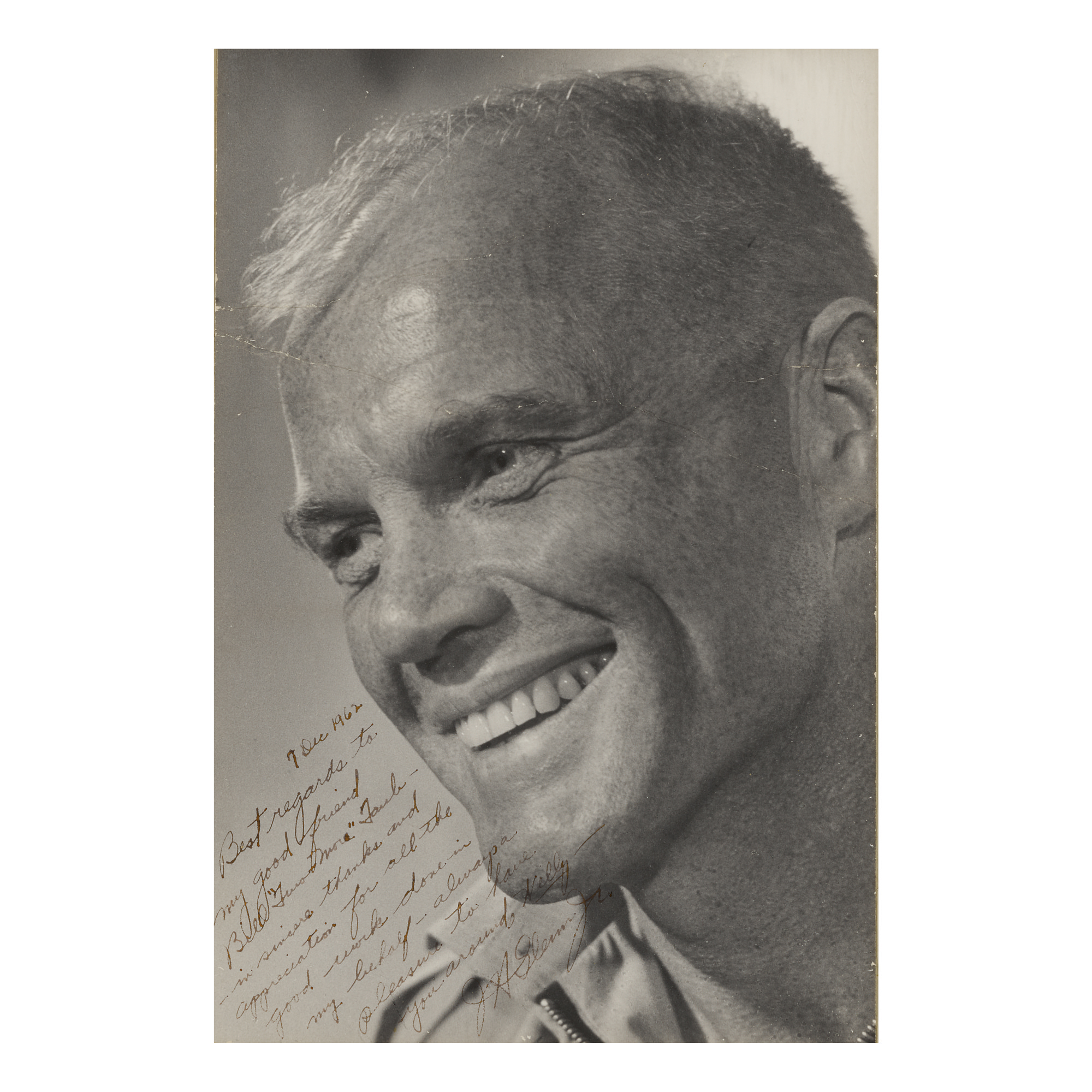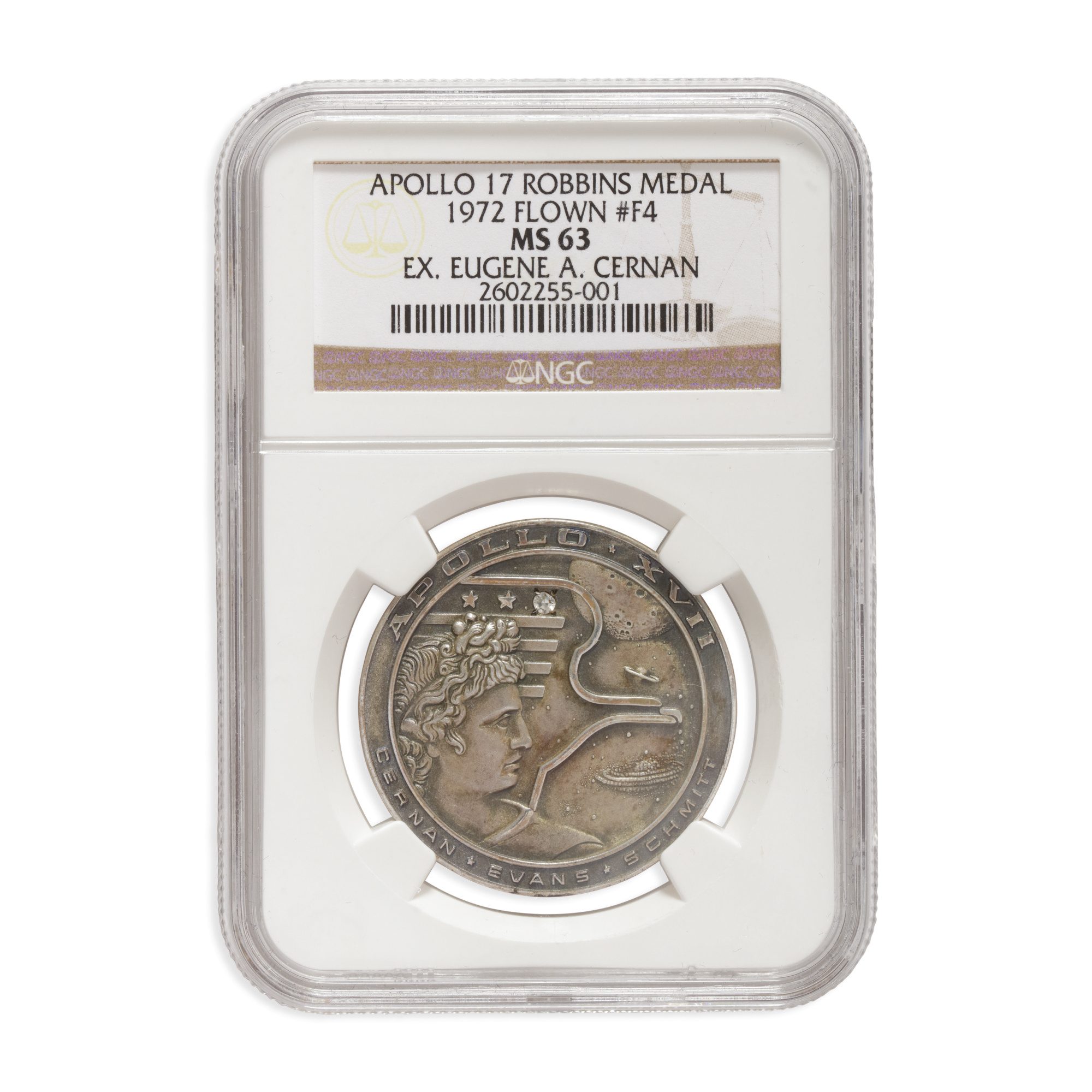NASA BIOSATELLITE-3Contractor’s model of the NASA Biosatellite-3, made by General Electric, ca 1969 Cut-away model of unknown scale (8 by 5 1/2 by 5 1/2 by 9 inches), metal, wood, acrylic and composite materials, mounted onto wooden base with metal plaque reading: "The NASA Biosatellite, Designed, Developed and Produced by General Electric Space Re-Entry Systems Programs Re-Entry & Environmental Systems Division." Metal tag to underside of base reads: "'Visual' Oakmont, PA. 15139. (412) 828-8211." With original 13 by 2 1/4 inch display sign. VERY RARE, EARLY MODEL OF THE NASA BIOSATELLITE, a satellite designed and built for NASA by contractor General Electric starting in 1963, and used to assess the effects of spaceflight on living organisms, in particular weightlessness and radiation. Biosatellite-1 was launched in 1966 aboard a Delta-G rocket, carrying with it several biological specimens. The capsule was unable to enter Earth's atmosphere due to a motor malfunction, and was stranded in orbit; it eventually re-entered the Earth's atmosphere and disintegrated in 1967. Biosatellite-2 launched in 1967 carrying 13 biological specimens including frog eggs, insects, plants, and other microorganisms. It spent 45 hours in Earth orbital flight, and provided NASA with valuable data. Biosatellite-3 was the last flight in the Biosatellite program. It launched in 1969 with a pig-tailed monkey named Bonnie on board, with the objective of studying the effects of space flight on brain states, cardiovascular and metabolic states, behavior, and fluid balances. While the intent was for Biosatellite-3 to stay in orbit for 30 days, Bonnie's quickly deteriorating health forced NASA to end the mission after 8 days. An identical model, lacking the contractor's label, can be seen on the website of the Smithsonian National Air and Space Museum at: https://airandspace.si.edu/collection-objects/model-satellite-biosatellite.
NASA BIOSATELLITE-3Contractor’s model of the NASA Biosatellite-3, made by General Electric, ca 1969 Cut-away model of unknown scale (8 by 5 1/2 by 5 1/2 by 9 inches), metal, wood, acrylic and composite materials, mounted onto wooden base with metal plaque reading: "The NASA Biosatellite, Designed, Developed and Produced by General Electric Space Re-Entry Systems Programs Re-Entry & Environmental Systems Division." Metal tag to underside of base reads: "'Visual' Oakmont, PA. 15139. (412) 828-8211." With original 13 by 2 1/4 inch display sign. VERY RARE, EARLY MODEL OF THE NASA BIOSATELLITE, a satellite designed and built for NASA by contractor General Electric starting in 1963, and used to assess the effects of spaceflight on living organisms, in particular weightlessness and radiation. Biosatellite-1 was launched in 1966 aboard a Delta-G rocket, carrying with it several biological specimens. The capsule was unable to enter Earth's atmosphere due to a motor malfunction, and was stranded in orbit; it eventually re-entered the Earth's atmosphere and disintegrated in 1967. Biosatellite-2 launched in 1967 carrying 13 biological specimens including frog eggs, insects, plants, and other microorganisms. It spent 45 hours in Earth orbital flight, and provided NASA with valuable data. Biosatellite-3 was the last flight in the Biosatellite program. It launched in 1969 with a pig-tailed monkey named Bonnie on board, with the objective of studying the effects of space flight on brain states, cardiovascular and metabolic states, behavior, and fluid balances. While the intent was for Biosatellite-3 to stay in orbit for 30 days, Bonnie's quickly deteriorating health forced NASA to end the mission after 8 days. An identical model, lacking the contractor's label, can be seen on the website of the Smithsonian National Air and Space Museum at: https://airandspace.si.edu/collection-objects/model-satellite-biosatellite.















Testen Sie LotSearch und seine Premium-Features 7 Tage - ohne Kosten!
Lassen Sie sich automatisch über neue Objekte in kommenden Auktionen benachrichtigen.
Suchauftrag anlegen